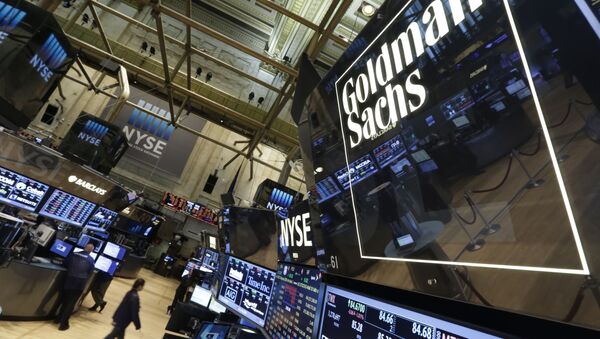Goldman is expected to post another quarter of lackluster financial results for the first three months of 2016 next week, supported by their recent announcement of personnel layoffs and efforts to lower the bankers’ expenses of airline tickets, accommodation and leisure. This week, a certain amount of tech staff in Goldman’s London branch were dismissed, whilst more personnel throughout Europe is now limited in paid business trips.
The Third Avenue crash in December, along with broader bond market gloom, dealt a great blow to Goldman’s performance recently, whilst stricter regulations like the Dodd-Frank act and stock market fluctuations further exacerbated Goldman’s outlook. The bank is getting increasingly reliant on underpaid junior personnel, while moving its operations to locations providing cheaper workforce and investing in technology aimed to increase labor efficiency.
“They are getting even leaner,” Chris Wheeler of London-based Atlantic Equities LLP. “They have also reduced traders in the business as the electronification of the business increases and as they see credit, rates and commodities follow equities and foreign-exchange onto electronic platforms.”
Goldman’s announcement of cost cuts is only a reflection of the entire industry facing hard times ahead. The significance of the impending doom is hard to underestimate: whilst involved primarily in higher-yielding open market financial operations, banks still provide money liquidity to the real sector, pumping blood in the veins of broader economic expansion.
Goldman’s revenues are still larger than their expenditures, according to the company’s annual filings, yet, the scale of their operation is shrinking. In Q1 2006, the bank earned $10.3 bln and spent roughly $7 bln, in Q1 2015 the bank’s financial performance was exactly similar in numbers, yet, in the first quarter of this year, Goldman’s project revenues are just about $7 bln, whilst the bank might have cut costs down to $5 bln. On Tuesday, the bank will unveil the actual numbers, but according to JP Morgan’s estimates, a possible 29% cut in costs would hardly make up for the greater 37% slump in revenues. Thanks to the Fed’s policies rendering the dollar stronger and Washington’s tightening grip on financial sector.
In a similar fashion, self-imposed austerity is spreading to other major US banks. JP Morgan Chase & Co. cut compensations at its corporate and investment division from $3.6 bln in Q1 2012 to $3.0 bln in Q1 last year to just $2.6 bln in Q1 2016, a 14% decline. Payoffs are falling even though JP Morgan’s Q1 performance beat earlier estimates as reported on Wednesday, but the outlook is rather grim.
Bank of America Corp., having also reported its Q1 revenues this week, introduces cost cuts as well due to falling profitability. BofA CEO Brian Moynihan said further cuts in expenses would be announced soon.
“There’s a lot more to do,” he said.
The negative tendencies in the US banking sector are likely to prevail in the medium term, affecting the banks’ performance and prompting them to downscale their operation. Given the unfavorable global environment, and excessively harsh domestic regulation, coupled with fears of recession and negligible gains in the real economy, the demand for financial services is bound to weaken. The Dodd-Frank act has made the regulatory system excessively complex for the banks to comply. In times when businesses fail to expand due to market factors, such regulation results in job cuts and declines in loan issuance. That, coupled with the Fed’s cautious adamancy to further hike interest rates, brings a recession closer.



